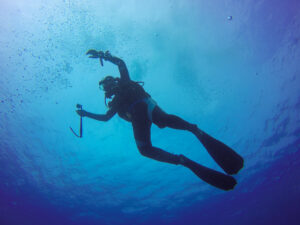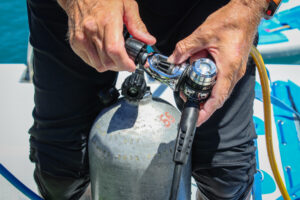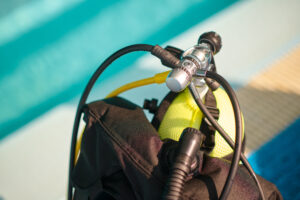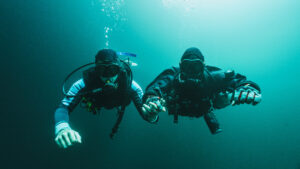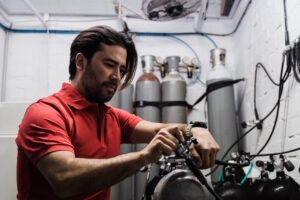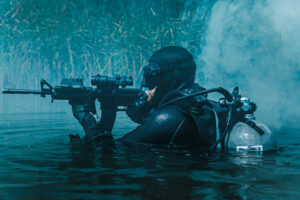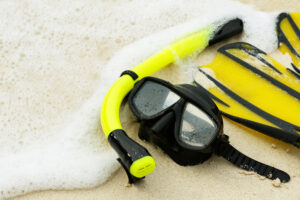Diver Propulsion Vehicle (DPV): A Comprehensive Guide
A Diver Propulsion Vehicle (DPV), also commonly known as an underwater scooter or a diver propulsion scooter, is a handheld and operated motorized device designed to enhance a scuba diver’s mobility and range underwater. The DPV has become an essential tool in recreational diving, technical diving, and underwater exploration, allowing divers to cover greater distances with less effort and reduced air consumption.
History and Development
The origin of DPVs can be traced back to the early 1960s when military and scientific research began to explore the potential of using motorized devices to increase the efficiency and effectiveness of underwater missions. The first DPV prototypes were bulky, heavy, and difficult to maneuver, but as technology advanced and the demand for such devices grew, DPVs evolved into more compact and user-friendly designs. Today, a wide range of DPVs is available in the market, catering to the diverse needs and preferences of divers.
Design and Components
DPVs come in various shapes and sizes, but their basic structure remains consistent. A typical DPV consists of the following components:
- Buoyancy Control: To ensure optimal buoyancy and stability underwater, DPVs are equipped with buoyancy control devices, such as foam or inflatable compartments. This feature allows divers to adjust the device’s buoyancy according to their needs and preferences.
- Propulsion System: The propulsion system of a DPV comprises an electric motor and a propeller or impeller, which generates thrust to move the device forward. The motor is powered by rechargeable batteries, which provide varying runtimes depending on the model, usage, and battery capacity.
- Speed Control: DPVs are equipped with a speed control system, allowing divers to adjust the device’s speed to suit their requirements. Speed is typically controlled via a trigger or a rotary switch on the handle.
- Handles and Towing Attachments: To maneuver the DPV, divers hold onto handles, which are usually placed on either side of the device. Some models also come with towing attachments or harnesses, allowing divers to attach the DPV to their gear and free up their hands for other tasks.
- Protective Shroud: A protective shroud encases the propulsion system to prevent injury to divers and marine life and minimize the risk of entanglement with underwater objects.
Types of DPVs
DPVs can be broadly categorized into two types: handheld DPVs and tow-behind DPVs.
- Handheld DPVs: These compact and lightweight devices are designed for easy one-handed operation, making them suitable for recreational divers and underwater photographers. Handheld DPVs typically have a lower thrust and battery capacity compared to tow-behind models, which limits their range and endurance.
- Tow-Behind DPVs: Tow-behind DPVs are larger and more powerful than handheld models, making them suitable for technical divers and underwater explorers who require increased range, speed, and endurance. These DPVs come with towing attachments or harnesses, allowing divers to attach the device to their gear and free up their hands.
Benefits of Using a DPV
- Increased Range and Endurance: DPVs enable divers to cover greater distances with less effort, allowing them to explore more extensive underwater areas and reach sites that might be inaccessible through swimming alone.
- Reduced Air Consumption: Since DPVs minimize the need for strenuous swimming, divers tend to consume less air, extending their bottom time and overall dive duration.
- Enhanced Underwater Photography and Videography: DPVs allow underwater photographers and videographers to move smoothly and steadily, capturing dynamic and stable shots.
- Conservation and Research: DPVs facilitate underwater research and monitoring efforts by providing researchers with a more efficient means of navigating underwater environments.
- Fun and Excitement: The thrill of zipping through the water on a DPV adds an extra element of fun and excitement to scuba diving experiences, attracting more people to the sport.
- Improved Safety and Accessibility: For divers with physical limitations or disabilities, DPVs offer a safer and more accessible way to explore the underwater world.
Training and Certification
As with other aspects of scuba diving, proper training and certification are crucial for safe and responsible DPV use. Several scuba diving training organizations, such as PADI, SSI, and SDI, offer DPV specialty courses that teach divers how to operate, maintain, and troubleshoot DPVs, as well as proper diving techniques and safety considerations specific to DPV use.
Environmental Considerations
While DPVs offer numerous benefits to divers, their use also raises environmental concerns. Inappropriate use of DPVs can damage fragile underwater ecosystems, disturb marine life, and contribute to underwater noise pollution. To minimize these negative impacts, divers should follow responsible DPV practices, such as:
- Maintaining a safe distance from marine life and avoiding contact with coral reefs, sea grass beds, and other sensitive underwater habitats.
- Adhering to local regulations and guidelines regarding the use of DPVs in protected areas or dive sites with known environmental sensitivities.
- Practicing good buoyancy control and maintaining a horizontal body position to prevent accidental collisions with the underwater environment.
- Choosing DPVs with low-noise propellers or propulsion systems to minimize underwater noise pollution.
Maintenance and Care
Proper maintenance and care are essential for the longevity and performance of DPVs. Divers should consult their DPV’s user manual for specific maintenance guidelines and recommendations, which may include:
- Regularly inspecting the DPV for damage or wear, such as cracks in the protective shroud, loose components, or compromised seals.
- Rinsing the DPV with fresh water after each dive to remove salt, sand, and other debris.
- Periodically lubricating moving parts, such as seals and O-rings, with the manufacturer-recommended lubricant to maintain their functionality and prevent leaks.
- Charging and storing batteries according to the manufacturer’s guidelines to prolong their lifespan and ensure optimal performance.
In conclusion, Diver Propulsion Vehicles have significantly transformed the underwater experience for scuba divers, offering increased mobility, range, and efficiency. By acquiring proper training and certification, adhering to responsible diving practices, and maintaining their DPVs, divers can safely and responsibly enjoy the many benefits these devices have to offer.


